

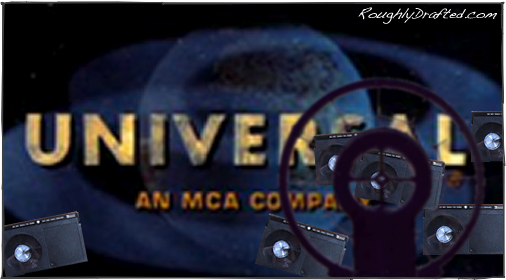
After struggling for decades to increase the technical sophistication of movies in order to make theaters competitive with television, it would seem logical that the studios would eventually be quick to retarget their efforts to sell their movies directly to users as home theater began to emerge.
Studios Hesitant on Home Theater.
However, rather than embracing home theater as a new retail market for their movies--and despite the enthusiastic demand for color TV and stereo radio--studios were wary to jump into direct retail sales of movies.



The studios instead preferred the subscriber model of Time Life’s new HBO, which began in the early 70s as cable systems were set up in New York City. Terrestrial signals were difficult to receive in urban areas with an antenna, so cable TV systems distributed signals over a wire.
The idea of subscribers willing to pay to receive movies over a cable TV line got the studio’s attention. Users weren’t as excited about paid TV channels, but there were no other options for watching movies at home.
The difficulty of maintaining subscribers meant that HBO didn’t begin 24 by 7 broadcasts until the end of 1981, nearly a decade later. Other studio owners created their own pay channels, including Viacom’s Showtime.
While studios grew to like the idea of selling admission to a “home box office” via cable TV, the prospect of selling individual movies to end users was a more difficult concept. What’s to stop people from watching the same movies repeatedly, without paying for each viewing?
AVCO’s 1972 Cartrivision offered the first video tape system designed for movie rental. Blank black tapes could be used to record, but red movie tapes were for rental only, and could only be rewound by dealers.
To watch a movie twice, users had to pay for a rewinding. The dealers’ rewind system also audited how many times movies had been watched so the studios could charge for each viewing. Studios obviously loved the idea.
Customers hated it, and it went nowhere. Various companies have repeatedly tried to resurrect this scam for the studios, including Circuit City’s self destructing DIVX discs and Microsoft’s exploding Windows Media rentals. Customers continued to hate them. Vendors, studios: notice the pattern.
Sharks with Friggin Lasers.
In 1969, music label and movie studio giant MCA began research into creating an optical disc format that could deliver movies to home users in a form similar to records.

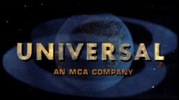

After buying up the struggling Universal Studios in the early 60s, MCA had discovered that the movie business was in decline and everything was moving toward TV.
MCA intended to earn money from its huge catalog of movie rights, which included early Paramount films and all of Universal Studios, by leveraging its contracts with record manufacturers to also produce the new videodiscs.
The Plan to Pimp the Studios
MCA created a new subsidiary called DiscoVision, which it intended to act as a label to other movie studios, distributing their movies on the new discs. MCA had principally been a talent agency and music label, and hoped to use its core competencies to sell other studios’ movies just as it had previously marketed performers.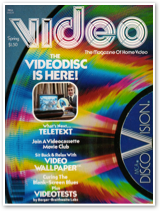

In the early 70s, MCA teamed up with Philips, which had also started its own efforts in building an optical disk player. Combining Phillip’s technical experience in hardware with MCA’s huge catalog of films suggested a great partnership, but it took nearly an entire decade for the new Laserdisc player to ship.
It was first introduced Atlanta in December of 1978 to near-riot conditions, where buyers scrambled to buy up the few dozen $750 players available, some offering $5000 to get one of the new devices. A second test run of players was offered in Seattle, but Laserdisc wasn’t offered in general release until 1980, and even then supplies of the new device were constrained.
Laserdisc offered the highest quality video that most home users had ever seen; the only common source of TV content up to that point was ariel broadcasts, lower quality video tape, and in urban areas, cable TV.


The Trailblazing Laserdisc.
The Laserdisc format presented a few problems for early adopters however:
-
•As the first consumer optical disc format, Laserdisc had to work out a few bugs. One was “LaserRot,” where oxygen leaked into the disc and rusted away the reflective layers.
-
•Since few TVs had video input--there was no existing reason for such a thing--Laserdisc players had to provide an RF signal output for TVs which mimicked the signal received by an antenna. VCRs and early computers had to deliver video to TVs the same way.
-
•Laserdisc content was hampered by high prices, with movies frequently being ‘priced for rental’ by studios who feared that low cost, high quality movies would kill the remaining business for movie theaters and cable TV subscriptions. ‘Priced for rental’ typically meant that movies cost around $100-150 each.
-
•Laserdisc was intended to be a read only format, just like vinyl records.
In the mid 70s, Betamax and VHS had emerged as lower quality playback devices using video tape. Both slowly gained in popularity over Laserdisc among consumers because the VCR could also be used to record TV and play home videos. VCRs weren’t popular with studios however.

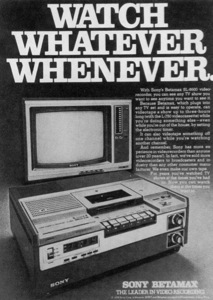

The Betamax Case.
While wary of the home theater market, movie studios were even more suspicious of consumers being able to record and duplicate their content.
MCA’s Universal Studios immediately sued Sony in 1976 for offering its video cassette recorder, claiming that it was designed and used primarily to infringe upon the copyright of MCA’s TV programming.
Armed with a VCR, users could steal movies and shows right off TV and watch them several times, even inviting over guests to watch movies without paying the studios extra licensing fees for each showing.
The Betamax Case was argued all the way to the US Supreme Court, which in 1984 handed down a decision that ruled private, non-commercial recording and timeshifting of TV to be fair use, and that manufacturers of such equipment could not be held liable for copyright infringement.
The Door Opens For Home Theater.
After nearly a decade of legal uncertainty and studio opposition, that decision opened the door for rapid growth in VCRs, which eventually proved that there was a real market for selling movies directly to consumers.
It took nearly another decade for that concept to be embraced by studios however. MCA, which had introduced Laserdisc to sell its movie catalog and had opposed VCRs to protect its TV interests, ended up being sold to Matsushita and renamed Universal Studios. It was then sold off to Edgar Bronfman Jr. during his brief reign of incompetence. Bronfman now heads Warner Music.
Leadership of Laserdisc was acquired by Philips, which then worked with Sony to introduce the CD audio format. The same digital sound was later added to Laserdisc, offering a very high quality soundtrack for movies.
Two Other Big Problems for Home Theater
By the early 90s, it appeared that the studios’ panicked fears of home theater users were nearly under control. However, two other critical problems still had to be solved:
-
•One was a brutal format war between various producers of home theater equipment that wasted huge amounts of resources for manufacturers and left consumers wary of buying obsolete equipment.
-
•The second involved engineering solutions for the technical problems of presenting movies designed for theaters on home theater equipment.
The next articles track the arc of both issues, which involve as many backstabbing characters, fight scenes, wars, sex, surprise endings, artistic genius, and brilliant engineering as the movies themselves.
Like reading RoughlyDrafted? Share articles with your friends, link from your blog, and subscribe to my podcast!
Did I miss any details?
Next Articles:
This Series

Haloscan Q107
Movie Studios vs. Consumers in Home Theater
Saturday, April 7, 2007

Ad



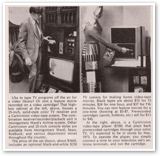
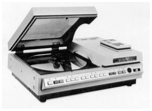

 Bookmark on Del.icio.us
Bookmark on Del.icio.us Discuss on Reddit
Discuss on Reddit Critically review on NewsTrust
Critically review on NewsTrust Forward to Friends
Forward to Friends
 Get RSS Feed
Get RSS Feed Download RSS Widget
Download RSS Widget





